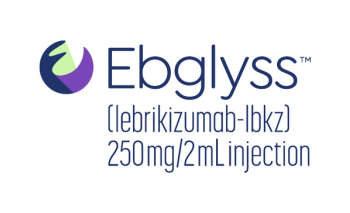
Don't pass up savings opportunities from OTC benefit programs
Adding over-the-counter products to the plan formularies is a simple way to save millions of dollars for payers.
Key Points
Pharmacy leaders pursue long-term money-saving goals through a variety of mechanisms, including medication therapy management, use of generics, value-based benefit design, prevention of adverse drug events and electronic medical records. Adding over-the-counter (OTC) products to plan formularies is perhaps a simple but overlooked way to save millions of dollars for payers.
"OTC drugs can add value to a drug plan because they often contain the same ingredients but at a lower cost than prescription agents," says A. Mark Fendrick, MD, co-director of the University of Michigan's Center for Value Based Insurance Design (VBID) and a consultant to Perrigo Co., an OTC manufacturer.
He believes that payers aren't leveraging the selective addition of OTC drugs-particularly those that were formerly available only by prescription. He coined the term "ORx" to describe the coverage of high-value OTC drugs under a prescription drug benefit.
Since over the counter drugs tend to cost less and provide overall value, Dr. Fendrick expects that the covered OTC products would qualify for placement on the lowest tier, which is often applied for generic drugs.
He recommends covering aspirin when taken for the prevention of cardiovascular adverse events, even though sponsors might believe that because it is so inexpensive, it's not worth including in a formulary management strategy. However, the inclusion of aspirin in the pharmacy benefit can allow plans to track patient adherence and through collected data, assess the "real world" effect of aspirin on clinical outcomes.
There are more than 80 therapeutic categories of OTC drugs, ranging from allergies to weight control, according to the FDA. Proton pump inhibitors (PPIs) and non-sedating antihistamines are two common categories that offer opportunity for OTC coverage.
For example, in 2008, PPIs represented a $14 billion market, with drug benefit plans covering more than 4.5 million prescriptions for Prilosec, according to IMS Health Data. The drug became available for OTC purchase in 2003, packaged as the Prilosec brand and as the OTC generic omeprazole.
Despite the availability of lower cost OTC drugs, the use of more costly drugs continues, according to an article in the April 2008 issue of the Journal of Family Practice. Dr. Fendrick says the two concerns about adopting OTCs are: plans having to change their pharmacy benefit design, creating a new formulary if needed; and consumers increasing utilization of inexpensive OTCs in a way that increases net costs.
RETAIL PROGRAMS ADD SAVINGS
Len Greer, senior vice president, pharmacy benefit management marketing for CVS Caremark, says companies can promote the use of retail customer loyalty programs for discounts on over-the-counter products. CVS Caremark also offers a formulary design that includes OTC drugs on the lowest-cost tier.
Three years ago, Blue Cross & Blue Shield of Rhode Island (BCBSRI) launched its OTC Options program, which drove users of the prescription branded antihistamine Claritin to switch to the over-the-counter drug by instituting a zero copayment for OTC. Antihistamines represent a high-spend and high-volume category for the plan. Tara Higgins, a clinical pharmacist with BCBSRI, says that 8% of users switched from the branded prescription antihistamine to the OTC version, saving $750,000.
The health plan applied the same model for those using Prilosec, the second highest in spending and volume for the payer, and saved $500,000 when 4% of members made the switch to generic OTC from the prescription brand drug Prilosec.
"We had anticipated a higher switch rate for [omeprazole] but discovered that people with reflux and heartburn tend to stay with a drug once it has proved effective for them," Higgins says.
On the other hand, BCBSRI studied the use of omeprazole OTC when it was dispensed in the physician's office, discovering that once members start on or switch to OTCs, they are likely to remain on them. Because formulary coverage enables the plan to track utilization, it can better monitor compliance and outcomes.
Newsletter
Get the latest industry news, event updates, and more from Managed healthcare Executive.



















































